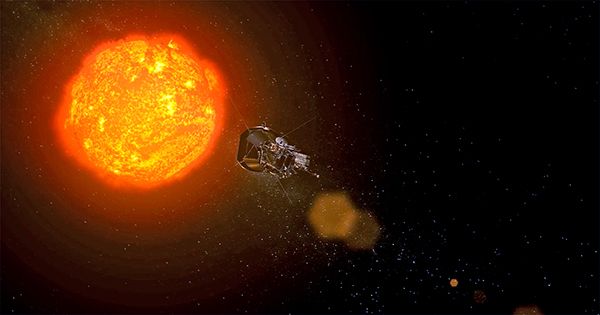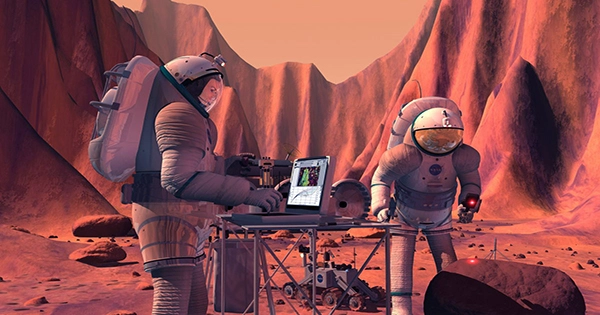NASA has formally begun planning the first crewed trips to Mars, which will include input from academics, international and industrial partners, as well as NASA’s own workforce. In a recent high-level workshop, NASA Deputy Administrator Pam Melroy remarked, “We will build this blueprint and rehearse it on the Moon with the objective of showing it on Mars.” NASA has established 50 objectives for which they are seeking assistance to get things started. They’ve also outlined the type of mission that may help them reach their goals.
The proposed trip will spend 30 days on the Martian surface, and NASA is seeking advice on the minimum capabilities required. The design includes a 25-ton pre-deployed cargo lander to guarantee the astronauts have the supplies they need when they arrive — transporting everything in one voyage with the crew was judged impracticable. A pre-landed crew assent vehicle is also necessary so NASA (and the astronauts) can be certain that they will be able to return to Earth. NASA is attempting to avoid a recurrence of the Apollo missions, which saw people land on the Moon six times in a short period of time before disappearing for 50 years (and counting).

“We want to get to a point where we can execute our missions on an annual basis,” said Jim Free, associate administrator. “So that we may maximize the science and our system usage.” To get there, the plan calls for two crew members to stay in orbit while the other two travel to Mars’ surface. A robot mission returning samples from the Martian surface is another predecessor. Aside from the amazing research that will be possible, it will provide NASA with a better notion of the circumstances in which crewed missions should be placed, as well as a practice, run for returning from Mars to the blue planet.
Even if it is repeated several times, a 30-day mission may feel short for so much work. The structure of the Terran and Martian orbits, however, means that if astronauts remain much longer, the return voyage will grow longer and more difficult, unless they stay for more than 500 days until the planets align again. The possibility of a 517-day expedition was examined, but the difficulties are evident. “We’re performing a demonstration,” Free explained. “For actions in the remainder of the Solar System in the future.”
Dr. Kurt Spuds Vogel, Director of Space Architecture, stated that it has been more than 30 years since President Bush originally announced the “Moon to Mars” initiative. He described the subsequent period as a “roller-coaster ride” that has caused “widespread tension and concern” among scientists since money was promised or at least hinted at several times before being removed or postponed. Despite its name, Artemis is partially an attempt to restart the Mars mission. The first stage of every mission has fewer challenges because to recent major advancements in launch technology.
The chance that the Artemis mission will put astronauts on the Moon before the end of the decade (despite certain previously reported and anticipated delays) moves us closer. Nonetheless, there are still several challenges in sending astronauts further than humans have ever gone and successfully returning them, which not all proponents admit. Submissions for those with ideas are due by May 31. “By the way, if we think your input is really fascinating, we could ask you to a workshop to talk about it,” Melroy stated. “If you’re interested, you may willingly provide your contact information.”














